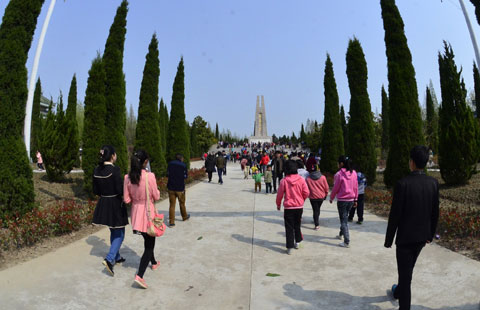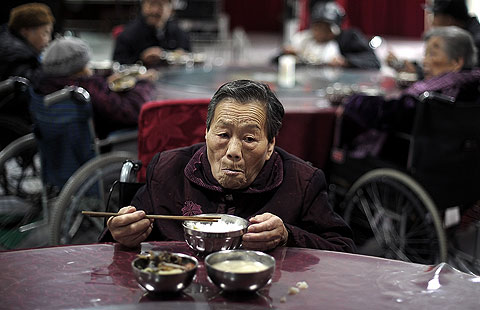Mid-life diseases up in China
Updated: 2014-04-15 08:33
By Yang Wanli (China Daily)
|
|||||||||||

Serious diseases affecting Chinese earlier in life, Yang Wanli reports in Beijing.
While most Chinese honor their ancestors on Tomb Sweeping Day, Tao Ye spent a lot of this year's holiday remembering a classmate from primary school who died of cancer a decade ago.

"She was the second person in our class to die of cancer. Another had passed away from the same cause a year earlier. She was also 43," Tao said. Given that her grandparents both lived into their 90s, Tao was shocked that her friends died at such a relatively young age.
"I never thought people could die aged just 40 or 50 - it should be the golden period of one's life, shouldn't it?" said the 53-year-old from Beijing.

The average life expectancy in China in 2010 was 74.8 years, an increase of 3.4 years from 2000, according to the National Bureau of Statistics.
However, longer life expectancy is often accompanied by a decrease in "health-adjusted life expectancy", or HALE, as defined by the World Health Organization. The HALE index indicates the average number of years a person can expect to live in "full health" by taking into account the years spent in less than full health because of disease and/or injury.
According to a report released by the World Bank, China's HALE was 66 years in 2011. The figure was 10 years less than that of most G20 countries, including the United States, Japan, Germany and Russia. Conditions such as cardiovascular disease and cancer kill more than 10,000 people in China every day, and the "incidence ages" - that is, the age at which the conditions are diagnosed - are falling, posing an increased threat to middle-aged people.
For example, statistics from the National Health and Family Planning Commission show that during the last 20 years, the average incidence age for liver cancer patients in China has fallen to between 35 and 55, from 45 to 55.
According to Hong Zhaoguang, a Beijing-based cardiologist, in recent years China has witnessed a marked decline in the ages at which a range of diseases and conditions are becoming apparent. "The middle-aged are facing the greatest health challenge from a number of diseases that we used to associate with people aged 60 and older," he said.
On World Parkinson's Disease Day - which falls annually on April 11, the birthday of James Parkinson, the pioneering doctor who first described the symptoms of the condition - news reports from several provinces indicated a rise in the number of people in their 40s being treated for the disease. Age is the largest risk factor for the development and progression of Parkinson's disease, and the condition has traditionally been most commonly associated with people aged 60 or older.
Today's Top News
Violence may escalate tensions with Moscow
After Crimea won, Putin tries not to lose Ukraine
Foreign investment law to be revised
Recorder may have gone silent
Enemies share eternity together
Response to tainted water raises concerns
Anti-graft rules made by local governments
Crucial Snowden questions loom over Pulitzers
Hot Topics
Lunar probe , China growth forecasts, Emission rules get tougher, China seen through 'colored lens', International board,
Editor's Picks

|

|

|

|

|

|





